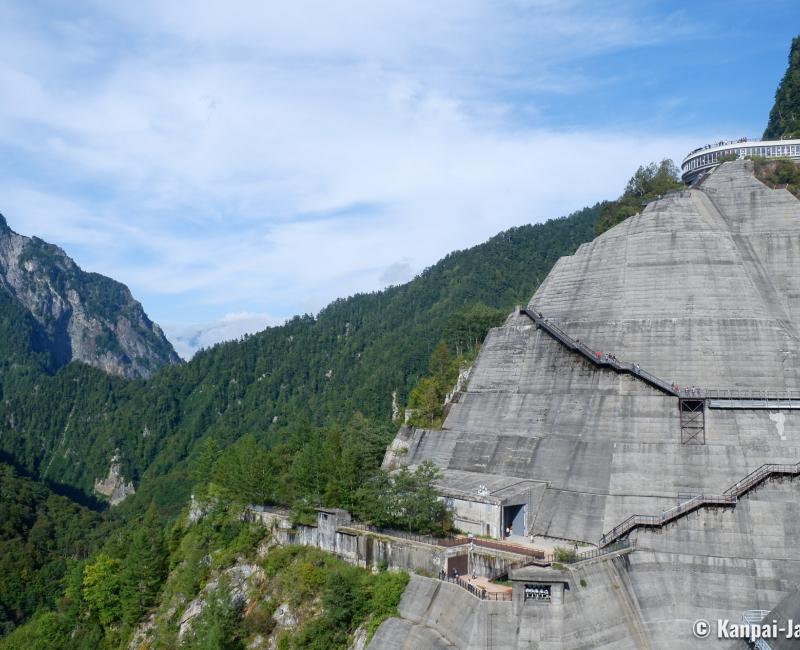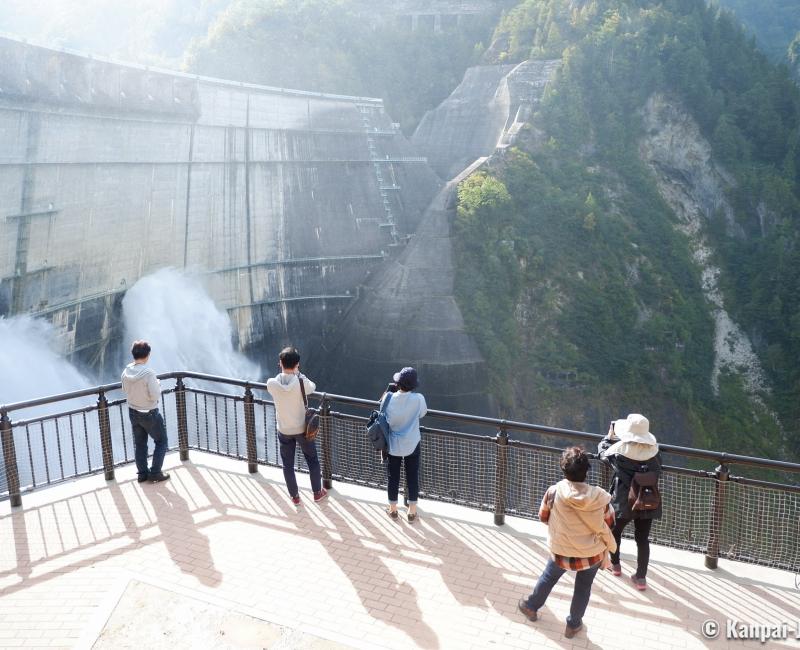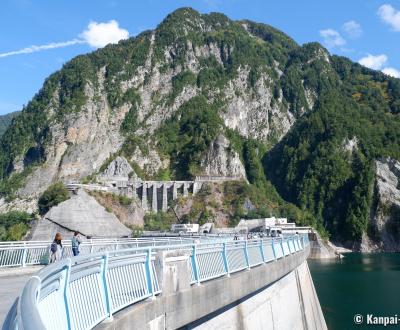Kurobe Dam
The Outstanding Structure on the Alpine Valley
Kurobe Dam is on the east of Tateyama Kurobe Alpine Route and on Tateyama City’s territory in Toyama prefecture. As Japan’s highest and largest arch dam, it is characterized by an impressive water flow. Several observation decks provide vantage points on its architecture and footprint on Kurobe River, in the heart of an Alpine valley.
The construction of Kurobe Dam was a complex feat that lasted from 1956 to 1963. During these seven years of works, 10 million workers were hired and 171 died from accidents on this highly complicated and risky construction site. Kei Kumai’s movie The Sands of Kurobe (Kurobe no taiyô) released in 1968 is an account of this tragic story. The gigantic work is often introduced, even today, as the biggest construction project of the 20th century in Japan.

A vertiginous building in the heart of the mountain
Standing 1,500 meters above sea level, the dam is 186 meters high and 492 meters long, tremendous dimensions that are still breaking records, making Kurobe Dam Japan’s highest and biggest arch dam.
The reservoir upstream, formed by Kurobe River contains 200 million cubic meters of water. The spillways release 10 tons of water per second, in impressive, powerful rumbling falls spraying the surroundings. It is highly recommended to visit between late June and mid-October when water is released every day. The hydro-power plant connected to the dam supplies about 1% of the country’s total energy production.
The Daikanbo observatory, a little bit farther and higher, at the level of Tateyama Ropeway, is moreover one of the best vantage points to better understand how outstanding the construction of this structure in the heart of the mountain was.

A well-marked and well-designed visit of the dam
Once at the dam, you can explore the place thanks to a sightseeing course that was designed and thoroughly thought to discover the entirety of the construction. Just follow the signs and the people preceding you to reach the various facilities:
- A pedestrian road on the dam’s retaining wall is the introduction, it is also the road to follow to continue on the Alpine Route. On the northern side spreads Lake Kurobe, on the south, the steep alpine valley. By the way, people suffering from vertigo should not come too close to the handrail. The view on the surrounding mountains is astounding.
- The three observation decks are accessible by outdoor stairways climbing along the rock wall on the side of the mountain in the east. The highest provides a wonderful panoramic view on the dam and its surroundings. The lowest observation platform faces the spillways to have a better view on water releases. In the vicinity, a small museum introduces in Japanese the dam’s history and its dangers.
- The boat cruise on the lake lasts about half an hour and is available from early June to late November. Its access is on the western side, towards Kurobedaira station.
Kurobe Dam is without a doubt a memorable place, unique in Japan, to visit at the beginning or at the end of a course on the Tateyama Kurobe Alpine Route.

